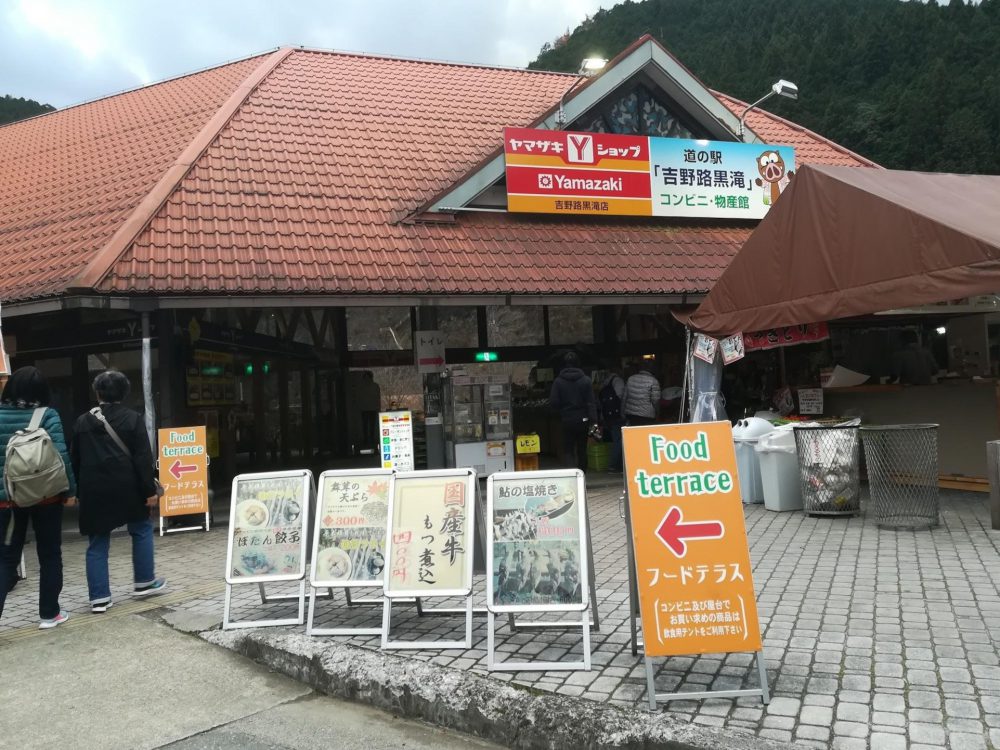In Japan, there are many “michi-no-eki” or “road stations” that sells local goods and food. In this article, I will introduce two michi-no-ekis in Nara.
「Japan’s “michi-no-eki” Roadside Markets: Where the Countryside Opens to the World (Part 1)」>>>
Oyodo Town
Oyodo is a town located in the very northern section of the Yoshino region and borders the Nara Basin to the south. The area features a lot of fruit farms, as well as some interesting historical landmarks, being a border region to the first capital of Japan. The michi-no-eki, known as the “Oyodo iCenter” is the biggest location out of all that we visited on the tour, featuring just about everything you would want from a visit to a market, including a nice restaurant, 2 different farmer’s markets (one more fruit-focused and the other more vegetable-focused, from what I could gather), a visitor center, and a wood products-focused shop. This michi-no-eki seems to service more than just Oyodo as it also has a lot of different goods from the neighboring towns of Yoshino and Shimoichi, thus perhaps explaining its larger size. That and it is centrally located on a busy road which connects the mountainous Yoshino region to the Nara Basin.
Oyodo special goods worth checking out
Oyodo hamburgers
Yes, the restaurant here sells a pretty mean burger and they actually sell out pretty quick so be sure to get here earlier in the day if you want one.
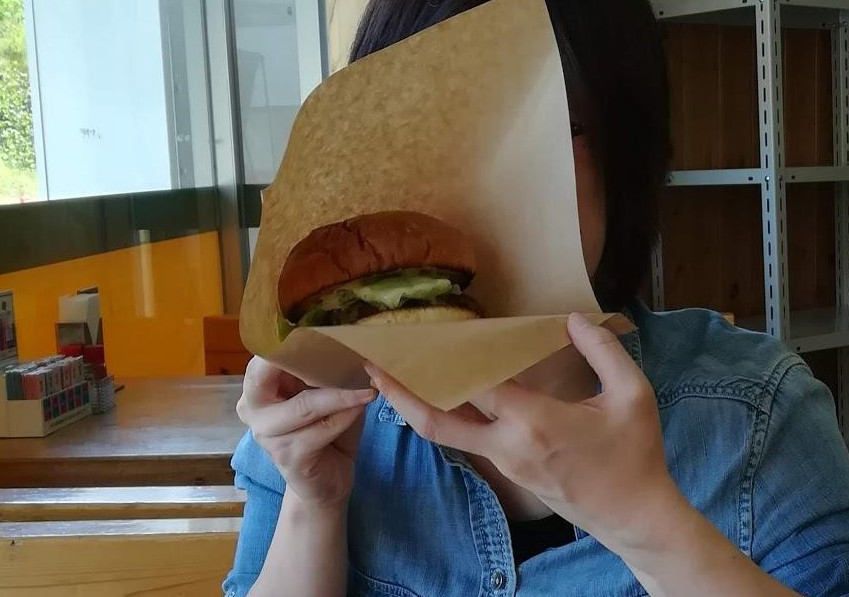
Banana bread
Not sure how this food came to be famous in Oyodo, but banana cake is apparently a highly sought-after souvenir food to buy from this michi-no-eki. Banana bread is a pretty difficult thing to find in Japan in general, so if this is definitely the place to go if you’re looking for it.

Persimmon bread and banana bread, which is actually referred to as “cake” in Japanese.
Hand-made wood products
The most impressive goods on display, in my opinion, were the handmade wooden goods, including cups, utensils, and other works of art, all expertly crafted by local artisans. The region of Yoshino is famed for its high quality lumber and it really shows in the goods on display here.. The section of handmade chestnut wooden spoons is not to be missed, as they are quite elegant in their design and yet also affordable, making for great gifts.
What else is in the are?
Actually, this is one of those places were there really is not much else in the area that would be reasonable to recommend. Just a big road which passes under a ridgeline separating the 2 main parts of Nara Prefecture. If you drive to Yoshino, you will probably end up going past this michi-no-eki, so be sure to take the time to stop here and check out what’s on display.
Kurotaki Village
Last but certainly not least on the tour was the village of Kurotaki, located a little ways south of Yoshino Town. Located along a beautiful river which is a popular picnic and BBQ destination during the summer, this michi-no-eki combines both the rugged beauty of the mountains with a bit of modern convenience to make it comfortable for all visitors to stop and visit. Features of the michi-no-eki include several different food booths, a restaurant which sells bento lunch boxes, a small market of locally grown crops, and a Yamazaki convenience store.
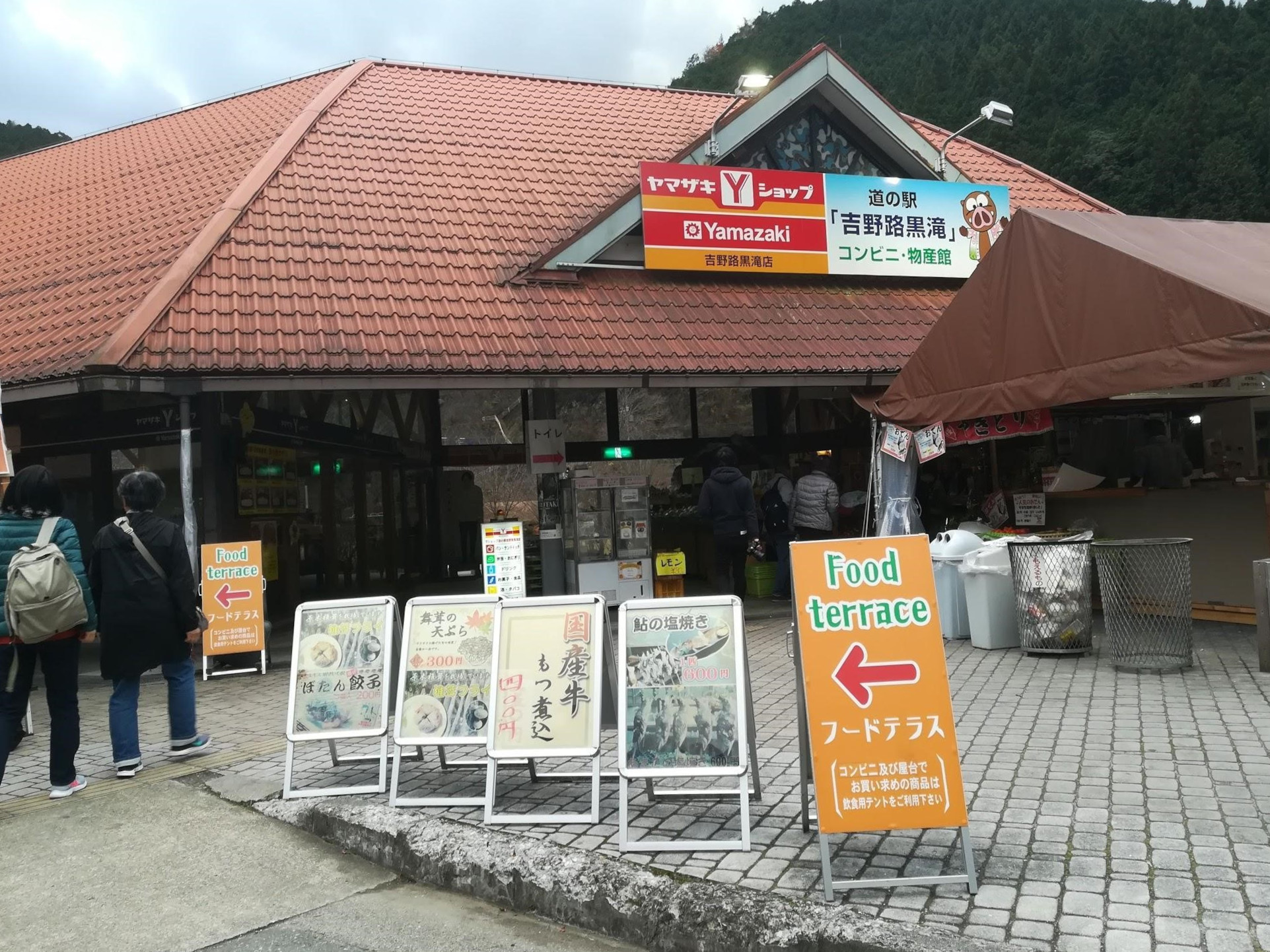
Kurotaki michi-no-eki
Kurotaki special goods worth checking out
Kurotaki white cucumber
A longtime tradition of kurotaki, this cucumbers are pickled and sold as supplementary food for rice and other meals. I tried a free sample of these cucumbers and ended up liking them a lot so I bought a pack to take home with me. On a related note, I think the pickled food that is common to Japanese cuisine often goes mistakenly overlooked, which is too bad because it is delicious, comes in a wide variety of different tastes and styles, and is very healthy. Nara pickled foods, known collectively as “Nara Zuke,” is actually one of the few famous traditional foods of the prefecture and can be purchased in many different locations, including michi-no-eki.
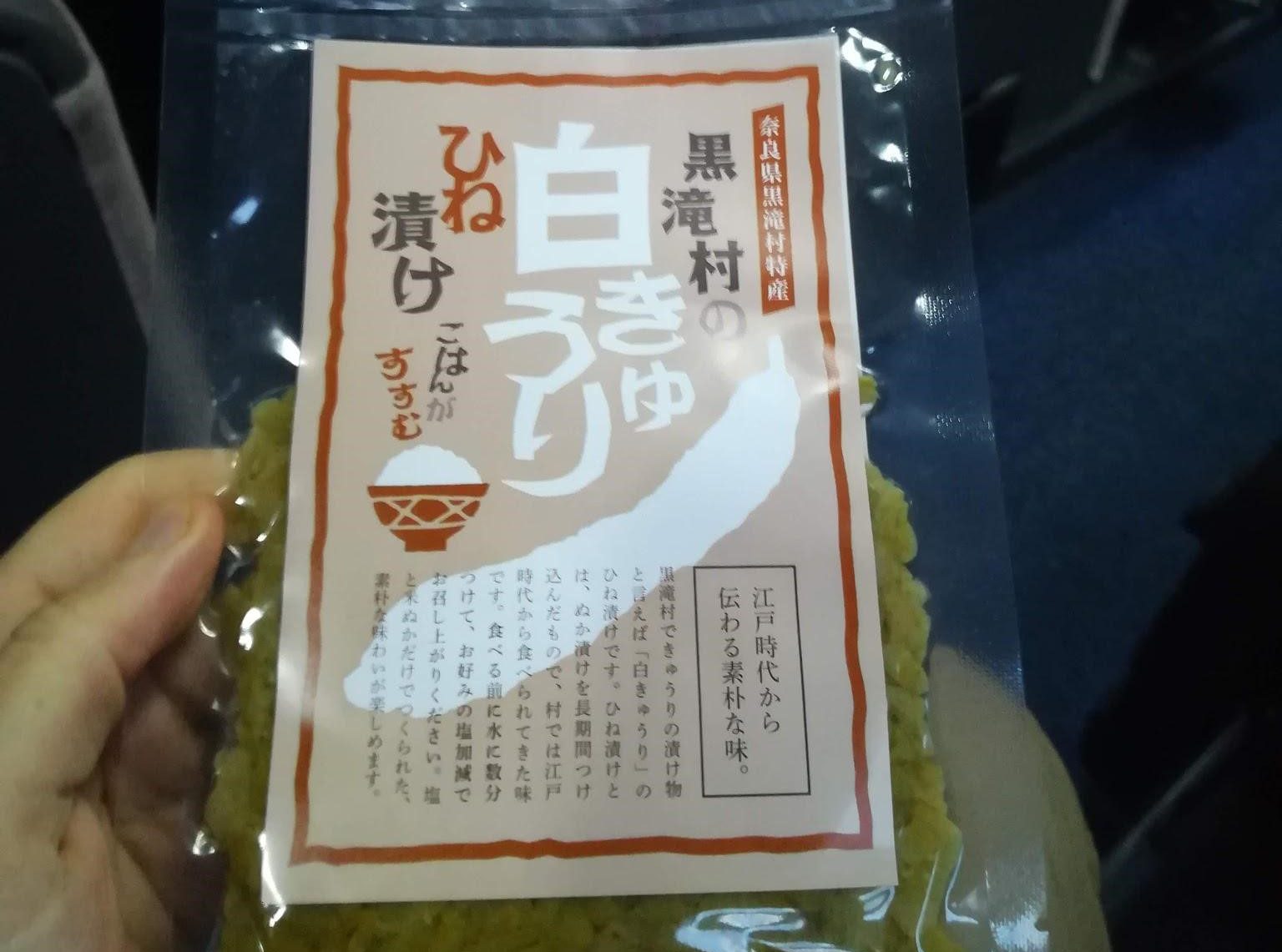
Spicy konyaku on a stick
Maybe the most famous food of this michi-no-eki is the large, fibrous triangles of konyaku that are sold by a group of friendly oba-san from their food booth, located across the parking lot from the entrance of the michi-no-eki. For me, konyaku was not something I liked immediately upon first trying it, as I found the texture and smell to be a bit off-putting. Recently though, I have found myself warming up to this super healthy food, especially the spicy variety that they sell here. Think hot-dog on a stick, but instead its a brown triangle of spongy plant fiber…on a stick. Just give it a try, what do you have to lose?
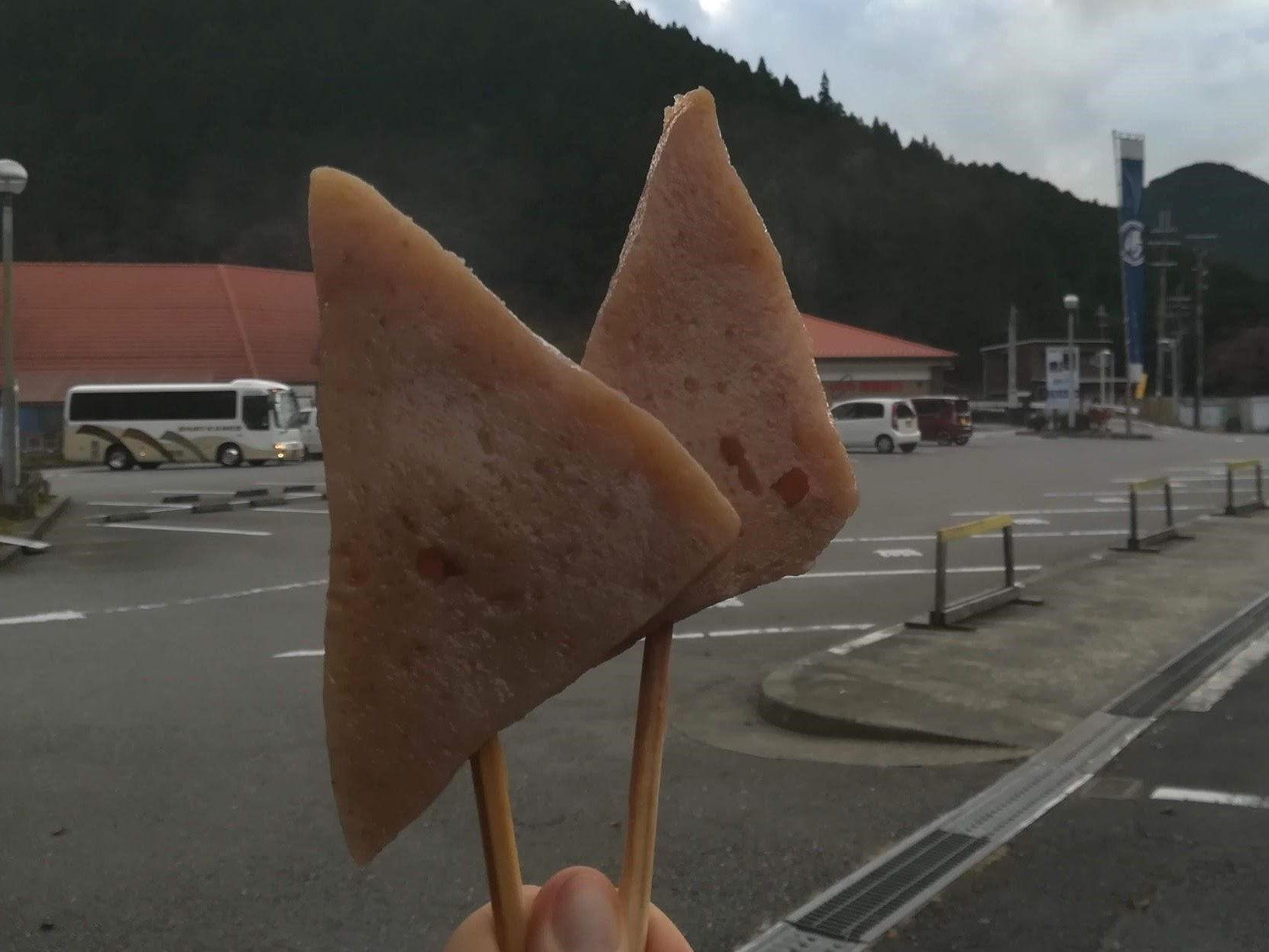
Kurotaki konyaku
Wild boar bento box
Never had wild boar meat before? Well, this may be your chance, as they sell a special variety of boxed “bento” lunch at this michini-no-eki that features prime cuts of this gamey meat. The wild boar is actually the mascot of Kurotaki Village as well, so apparently they have a lot of them running around the area. While a bit expensive, the rareness of this particular bento box makes it well worth the price to try at least once.
What else in the area?
The area around this temple, like Uda City, is one of the more interesting places to explore. Walking just up the road from the michi-no-eki, you can follow the gentle river valley to find some hiking courses, an artificial onsen, and eventually a campground. Beyond that, the mountain village of Kurotaki makes for a beautiful and fun area to explore, especially if you happen to be traveling with a bicycle.
=============
There are many more michi-no-eki around Nara Prefecture beyond what I visited on the tour, each with its own traditional food or craft for you to check out. Multiply that by every prefecture in Japan and you can see why the world of michi-no-eki touring in Japan is something you could spend a lot of time doing. The Nara michi-no-eki actually have a special incentive for visiting all of them in the form of stamp collecting; collect all the stamps (in the michi-no-eki stamp book), and you will earn a prize!
Likening michi-no-eki to small museums would not be a bad comparison, as the goods in each location tell a story to visitors about the history and culture of of the many smaller townships of Japan. Truly, there is something for everyone to be found in each of these fascinating markets, making them a worthy addition to any traveller’s itinerary in Japan.

